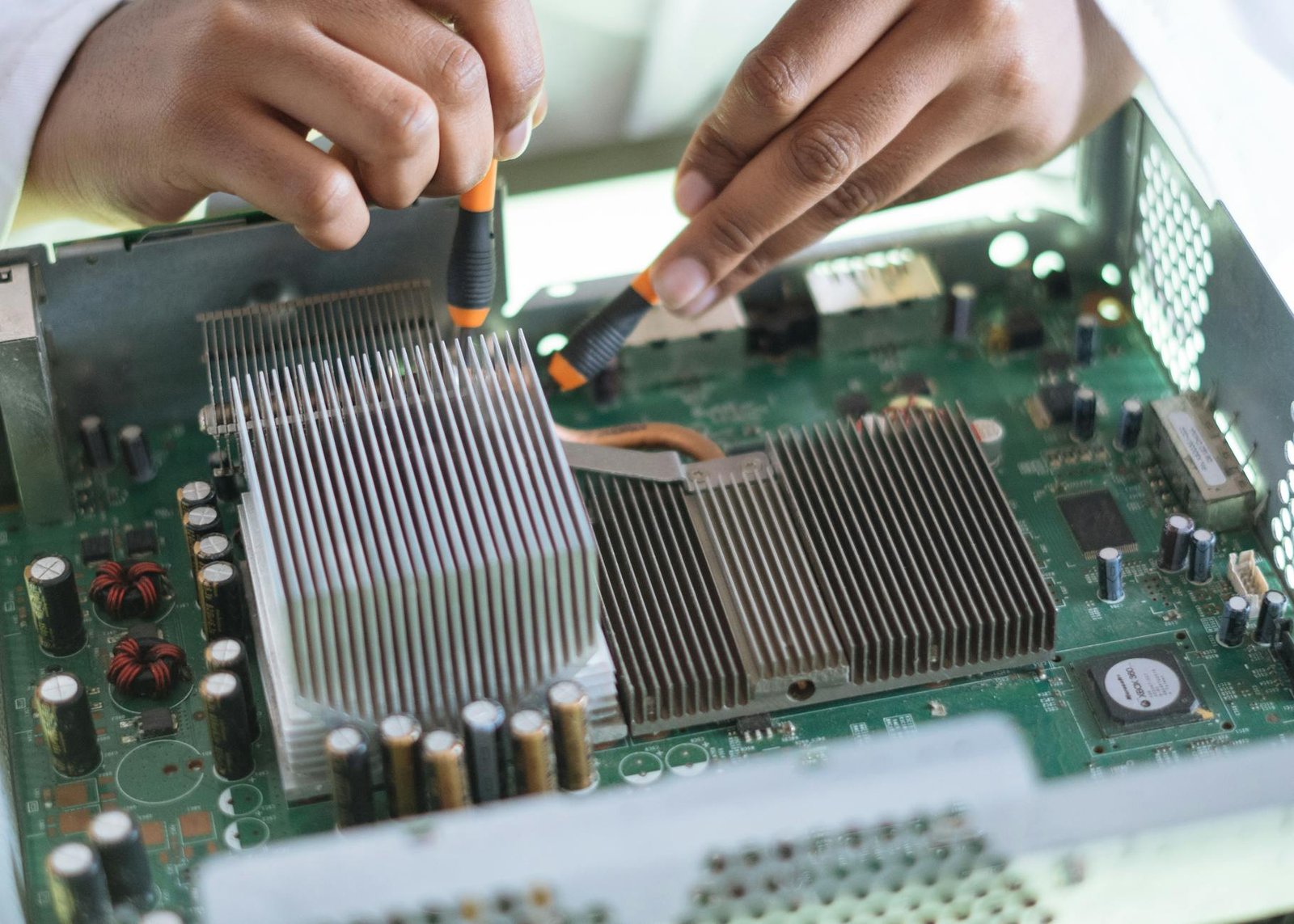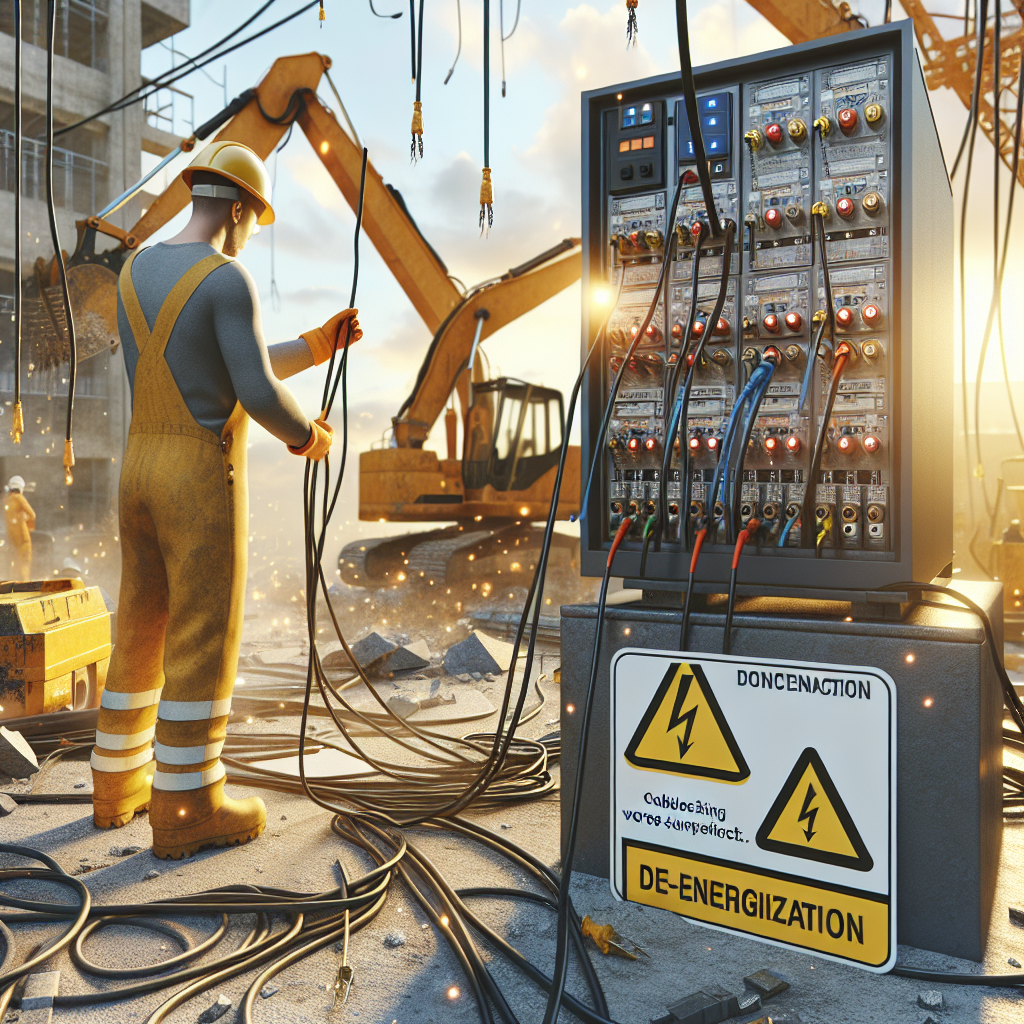Give Me A Brief Overview On De-energized
De-energized refers to removing the electrical power source or flow from a device, system, or environment.
This concept is key for safety measures during construction work, as it prevents accidents related to electric shock, safeguarding builders and machinery alike. Deenergizing a site also helps safely secure a construction project at the end of the day when folks leave.
Let’s kick off this article and learn more about the nuances of de-energizing a site.
Table of Contents
Understanding ‘Deenergized’ in Electrical Work

Defining ‘Deenergized’
Deenergized refers to the state of an electrical component when it is disconnected from the source of its power, ensuring no electrical current runs through it.
It basically means the stoppage of the flow of electrical current to an appliance, device, or an entire circuit system.
Reasons to Deenergize
There are several reasons why an electrical circuit or component might need to be deenergized:
- Maintenance and Repairs: To ensure safety, electrical systems must be deenergized before performing routine check-ups or remedying faults.
- Emergency Situations: In circumstances such as fire, flood, or a serious malfunction, it becomes critical to deenergize the circuits to prevent further damages or risks.
- System Upgrade: During modifications or upgrades of the existing electrical system, the circuit is briefly deenergized to facilitate safe installation of new components.
Importance of Lockout/Tagout (LOTO) while Deenergizing
It is crucial to adopt proper lockout/tagout (LOTO) procedures when deenergizing an electrical system.
LOTO is a safety mechanism used in the industrial and construction fields to ensure that dangerous machines and appliances are properly shut off and not unexpectedly started up again. The Occupational Safety and Health Administration (OSHA) clearly outlines LOTO procedures to ensure safe deenergization.
Key LOTO Steps
- Notify all affected employees
- Shut off the equipment
- Disconnect the equipment from the energy source
- Lock and label the energy-isolating device
- Ensure no residual energy remains in the system
- Verify the success of the lockout
Safety is paramount in any construction environment, and understanding terms like deenergized make the workplace safer. Remember to always observe appropriate LOTO procedures when deenergizing electrical systems.
Exploring Deenergized Circuits in Depth

In light of the information shared above, it is evident that deenergizing a circuit is an essential step in working with electrical systems.
But, what is a deenergized circuit? What are some of the nuances involved in operating with them? Here is a closer look at what happens when electrical power is removed from a circuit and how to carefully handle deenergized circuits.
The Anatomy of Deenergized Circuits
When a circuit is deenergized, it does not merely mean that electricity has been cut off. It means there are no live parts or points of voltage within the system, and the electrical energy has been restrained from energizing the system. Essentially, disconnecting a power source turns a potentially dangerous energized circuit into a safer, deenergized state.
Characteristics of Deenergized Circuits
Though a deenergized circuit may not possess any voltage or live parts, it is important to remember that this state is not permanent. This brings us to some of its properties:
- Potential for Energy Return: Deenergized circuits can swiftly return to an energized state if the power source is reconnected.
- Induced Voltages: In some circumstances, deenergized lines can still exhibit voltage if they are in proximity to energized lines. This scenario leads to induced voltages that can be potentially harmful.
- Residual/Stored Energy: Some components, like capacitors, can store energy even after the power source is disconnected. Hence, potential energy may still be present in a deenergized system.
Proper Handling of Deenergized Circuits
Monitoring a deenergized circuit necessitates the use of correct equipment and strict adherence to safety procedures. It’s essential to understand this for minimising potential hazards.
Utilizing Voltage Testing Instruments
Before working with a deenergized circuit, use a voltage tester to guarantee there is no voltage present. This simple proactive step could prevent accidents.
Observing Safe Work Practices
NFPA suggests treating all electrical circuits as though they are live until proven otherwise. Specialized Personal Protective Equipment (PPE) should be worn, and the working area must be cordoned off to restrict unauthorized access.
The Reality of Deenergized Circuits
Though a deenergized circuit restricts the flow of electrical current, it is not inherently safe without adequate precautions. Understanding the characteristics of these circuits and adhering to safety measures culminates in a safer work environment. Recognition of the dangers associated with inappropriate deenergizing procedures can greatly reduce worksite accidents and foster a culture of safety consciousness.
Further Determinants of Safety in Deenergizing Circuits
It’s clear that deenergizing electrical circuits plays a key role in ensuring safety during construction projects, but what additional factors can enhance this assurance? To achieve this, we need to delve into concepts such as the re-energization process and training requirements.
Procedures for Re-energization
Once the required work on a deenergized circuit or component has been completed, it needs to be safely reconnected to its power source again.
Key Steps for Safe Re-energization
Appropriate procedures need to be followed for re-energization to ensure that safety is not compromised. Here are the crucial steps:
- Remove LOTO Devices: When it’s time to re-energize the system, the first step is to remove any lockout tags or devices, provided that it’s safe to do so.
- Exercise Extreme Caution: Avoid flashover and arc flash risks by following safety procedures and wearing the right protective equipment.
- Check the System: Make sure there are no loose wires or faulty connections that could cause a problem once the system is energized.
- Gradual Energization: Slowly energize the system might prevent a power surge and subsequent component harm.
- Confirm Functionality: Verify that the circuit or component is functioning correctly once it has been energized.
Training for Safe Deenergization
Understanding and implementing the theoretical steps involved in deenergization, and re-energization is not enough. The personnel handling the process need adequate training to ensure a safe and successful outcome.
Why Training is Critical
Training equips the personnel with hands-on experience and enables them to handle real situations. It reinforces knowledge, enhances skill, and builds an attitude of safety. OSHA-compliant training programs can serve as benchmark platforms to acquire this critical education and skill development.
Enhancing Safety through Adequate Understanding and Training
Being comfortable with deenergization and re-energization need not be a cumbersome process marked by fear and trepidation. With a correct understanding of the process, respect for electricity, knowledgeable handling, usage of right tools, and comprehensive training, it’s possible to reduce electrical hazards significantly on a worksite. This will not only ensure safety but also impart a sense of confidence among the workers, leading to a more productive and efficient working environment.
Synonyms for ‘Deenergized’
Having gained a deep understanding of the concept of deenergization and how it plays out in real-world scenarios, it’s also valuable to be mindful of synonymous terms often used in this context.
Recognizing these synonyms can enhance your comprehension and communication skills when dealing with electrical systems.
Common Synonyms for ‘Deenergized’
The term ‘deenergized’ has various synonyms in electrical parlance. Broadly, these terms can be summed up as:
- Powerless
- Unpowered
- Non-electrified
- Uncharged
These synonyms uphold the same essence as ‘deenergized’, indicating a state where there is no electricity or energy supply to a component, device, or circuit. While the term used may differ, the ultimate goal remains the same: safety.
Done With Reading About De-Energized?
From our perspective, understanding ‘deenergized’ can lead to enhanced professional efficiency and, more importantly, workplace safety in the electrical construction domain. It invokes a broader understanding, not only to adhere to, but also appreciate the importance of safety procedures like LOTO when disconnecting power sources.
We’ve found that deenergization serves critical purposes — from regular machine maintenance to emergency situations, to system upgrades.
In our experience, implementing LOTO procedures enables a safer deenergization process and, more importantly, protects against possible accidents during maintenance or unexpected power resumption. Thus, educating oneself about such crucial aspects can transform a hazardous electrical environment into a much safer one.
To summarize, habituating oneself to the concept of ‘deenergized’ and the accompanying safety practices like LOTO can profoundly contribute to minimizing risks and fostering a safer, more efficient construction site.






